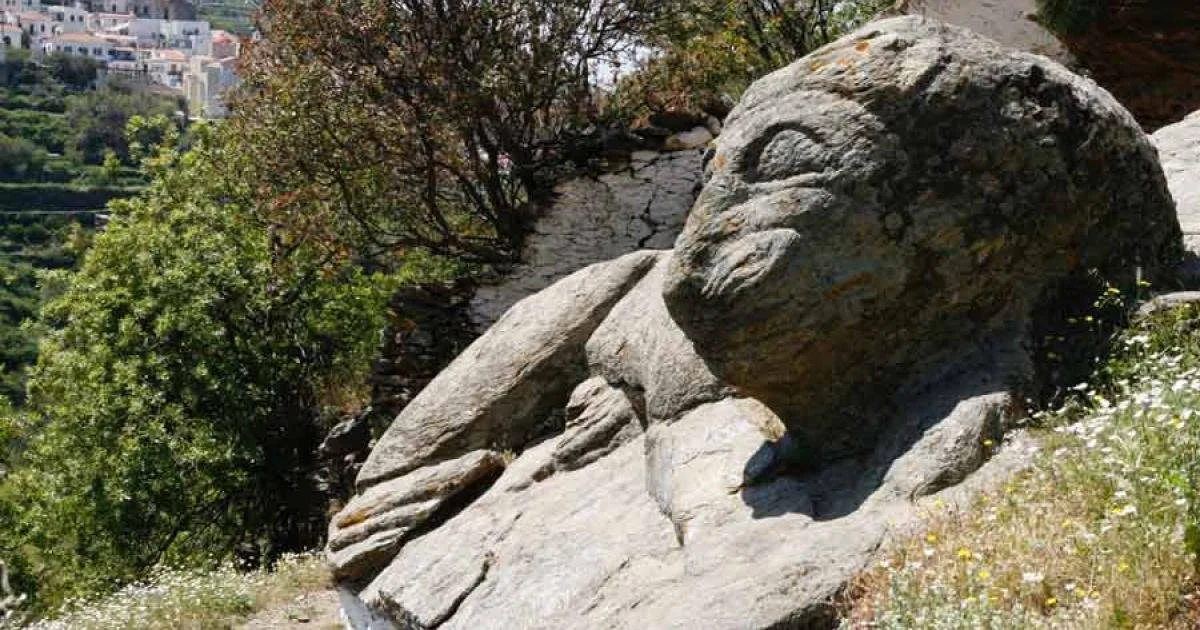The Guardian of Kea Island:
Nestled on the Greek island of Kea, the Lion of Kea is a remarkable artifact of ancient Greece, captivating visitors with its historical significance and enigmatic allure. As the closest Cycladic island to Athens, Kea has been a sought-after destination since antiquity. Among its many treasures, the Lion of Kea stands out—a massive stone monument carved around 600 BC that continues to spark wonder and curiosity. Known locally as "liontas," this iconic statue embodies the island's rich mythology and cultural heritage.
Mythological Origins of the Lion
The Lion of Kea is steeped in myths that intertwine with the island’s natural beauty and ancient lore. According to legend, Kea was once home to enchanting water nymphs whose allure incited jealousy among the gods. In their ire, the gods sent a lion to protect the island and drive away the provocative nymphs. This myth suggests the lion’s creation as a guardian of the island’s freshwater springs, vital for life and prosperity.
John Caskey’s 1981 article, Notes on Keos and Tzia, elaborates on the lion’s symbolic role. He suggests the sculpture commemorates a rare and devastating drought, with the lion embodying both a protector and a poetic reminder of Kea’s resilience. The island, once known as "Water Island" due to its abundant springs, reportedly lost its water sources after the lion scared away the nymphs. Only through the intervention of the god Aristaeus, and Zeus’s eventual approval, did rain and the nymphs return, restoring the island’s natural beauty.
The Monument's History and Features
The Lion of Kea is located near the ancient city of Ioulida, surrounded by ruins that echo the island's long history. Carved from a single block of local limestone, the statue measures 8 meters (26 feet) in length and 3 meters (9.8 feet) in height. Its creation predates 600 BC, showcasing the artistic and engineering prowess of the time. While its sculptor remains unknown, its archaic design, including the characteristic "Archaic smile," ties it to other monumental works of the era.
The lion’s secluded location raises speculation about its purpose. Some theories suggest it served as a grave marker, a common practice for lion statues in ancient Greece. Others propose it marked the presence of nearby freshwater streams. Regardless of its original intent, the Lion of Kea remains a testament to the island's enduring significance in Greek history and culture.
Documented Through the Ages
The Lion of Kea has inspired writers, explorers, and historians for centuries. Danish writer Peter Oluf Brödsted sketched the lion in meticulous detail in 1826, followed by James Theodore Brent’s descriptive accounts in 1885. Brent noted its distinct archaic craftsmanship, comparing it to the famed lions of Mycenae but asserting the Kea lion's unique charm.
Archaic Greek Sculpture and Symbolism
As one of the oldest monumental sculptures in Greece, the Lion of Kea reflects the artistic conventions of the Archaic period. Its curved tail and dynamic body lines align with stylistic trends of the era. Lions were prominent symbols in Greek art, representing strength, protection, and divine favor. Similar sculptures, such as the lions on Naxos’s Terrace of Lions dedicated to Apollo, underscore their cultural and spiritual significance.
The lion’s "Archaic smile," a hallmark of 5th and 6th-century BC sculptures, suggests health and vitality. Some scholars, however, argue that the smile may be the result of millennia of erosion, obscuring the lion's original expression. Traces of color on similar statues hint that the Lion of Kea might once have been vividly painted, adding to its grandeur.
Legacy of the Lion
The Lion of Kea remains a symbol of the island’s rich history and mythology. Its mysterious origins, intricate craftsmanship, and connection to ancient Greek culture continue to draw visitors to Kea, offering a glimpse into the artistry and storytelling of a bygone era. As both a historical artifact and a cultural emblem, the Lion of Kea endures as a timeless guardian of the island’s heritage.











